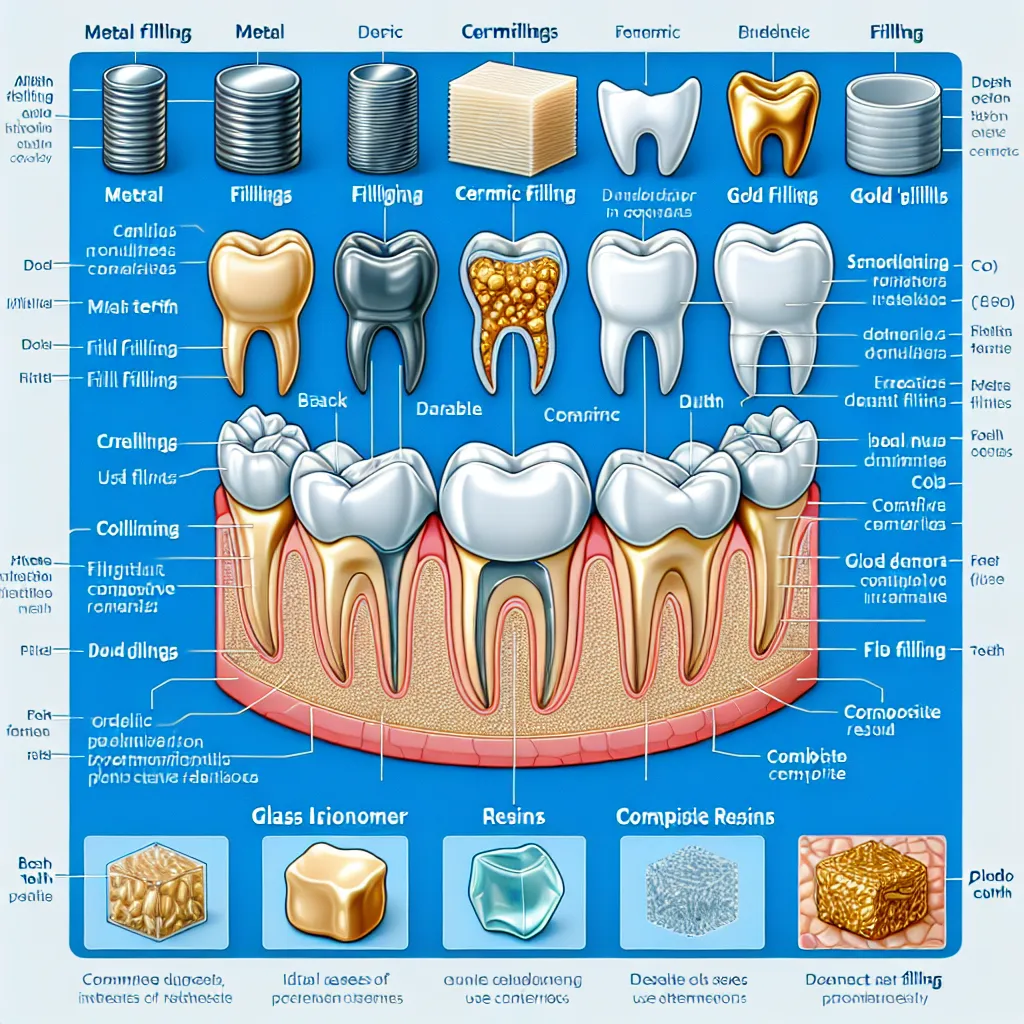
Overview, Types, Uses of Dental Filling Materials
When it comes to dental care, understanding the various types of filling materials and their uses is crucial. This article provides an overview of the different materials used for dental fillings, explores the specific types available, and discusses the uses and benefits of each material. Read on to learn more about the world of dental filling materials.
Overview of Dental Filling Materials
When it comes to restoring teeth, various dental filling materials are utilized based on the specific needs of each patient. From traditional amalgam fillings to modern composite resins, each type of filling material offers unique characteristics and benefits.
1. Amalgam Fillings
Amalgam fillings, also known as silver fillings, have been a staple in dentistry for decades. They are durable, cost-effective, and have high resistance to wear and tear. However, their silver color makes them more noticeable in the mouth, which can be a downside for some patients.
2. Composite Resin Fillings
Composite resin fillings are popular for their natural appearance. These fillings can be color-matched to the patient’s teeth, making them virtually indistinguishable. Although they are aesthetically pleasing, composite fillings are not as durable as amalgam and may require more frequent replacement.
3. Ceramic Fillings
Ceramic fillings, also known as porcelain fillings, are highly biocompatible and resistant to staining. They are a great option for patients with allergies or sensitivities to metal. Ceramic fillings are strong and durable, making them a long-lasting choice for dental restorations.
4. Glass Ionomer Fillings
Glass ionomer fillings are a versatile option that releases fluoride, aiding in the prevention of tooth decay. These fillings are commonly used for children or in non-load-bearing areas of the mouth. While not as durable as other materials, glass ionomer fillings offer unique benefits for certain situations.
5. Gold Fillings
Gold fillings, although less common today, are known for their longevity and durability. They are biocompatible and gentle on opposing teeth. While the cost of gold fillings can be higher than other options, their durability and wear resistance make them a preferred choice for some patients.
Different Types of Dental Filling Materials
When it comes to dental fillings, there are various materials available to restore teeth damaged by decay. Each type of filling material has its own unique characteristics, suitability for different situations, and benefits. Let’s explore the different types of dental filling materials commonly used by dentists:
1. Amalgam Fillings
Amalgam fillings, also known as silver fillings, have been used for over a century. They are a mixture of metals including silver, mercury, tin, and copper. Amalgam fillings are durable, cost-effective, and ideal for filling cavities in molars due to their strength. However, their metallic appearance makes them less popular for visible teeth.
2. Composite Resin Fillings
Composite resin fillings are tooth-colored and blend seamlessly with natural teeth, making them a popular choice for front teeth fillings. They are made of a mixture of plastic and fine glass particles. Although composite fillings are less durable than amalgam fillings, they are versatile, can be bonded directly to the tooth, and provide a natural aesthetic look.
3. Ceramic Fillings
Ceramic fillings, often made of porcelain, are highly resistant to staining and mimic the appearance of natural teeth. They are usually more expensive than other types of fillings but are durable and biocompatible. Ceramic fillings are an excellent choice for patients with allergies to metal or those seeking a more aesthetic option.
4. Glass Ionomer Fillings
Glass ionomer fillings are made of acrylic and a type of glass material. They are commonly used for children or as temporary fillings due to their weaker nature compared to other materials. Glass ionomer fillings release fluoride, which can help prevent decay in surrounding teeth.
5. Gold Fillings
Gold fillings, although expensive, are extremely durable and can last for decades. They are custom-made in a laboratory and are well-tolerated by gum tissues. Gold fillings are a suitable choice for patients looking for a long-lasting and biocompatible option.
Types of Dental Filling Materials and Their Uses
When it comes to dental fillings, there are several types of materials that dentists use to restore teeth. Each filling material has its own unique characteristics and applications, catering to different needs and preferences. Let’s explore the diverse world of dental filling materials and the various uses they serve.
1. Amalgam Fillings (Silver Fillings)
Amalgam fillings, also known as silver fillings, have been a traditional choice for restoring decayed teeth. These fillings are durable and cost-effective, making them a popular option for back teeth where chewing forces are strongest. Despite their metallic appearance, amalgam fillings offer strength and longevity, making them a reliable choice for many patients.
2. Composite Resin Fillings
Composite resin fillings, made of a mixture of plastic and fine glass particles, provide a more aesthetically pleasing option compared to amalgam fillings. These tooth-colored fillings can be closely matched to the natural color of your teeth, making them ideal for front teeth or visible areas. While composite fillings may not be as durable as amalgam, they offer a more natural look that appeals to those concerned about cosmetic dentistry.
3. Ceramic Fillings
Ceramic fillings, also called porcelain fillings, are a popular choice for those looking for a natural and biocompatible option. These fillings are highly resistant to staining and are well-tolerated by gum tissues, making them a suitable choice for patients with allergies or sensitivities. Ceramic fillings blend seamlessly with natural teeth, providing a strong and durable restoration that mimics the appearance of real teeth.
4. Glass Ionomer Fillings
Glass ionomer fillings are a unique option that releases fluoride, offering additional protection against decay. These fillings are commonly used in deciduous teeth, as they are well-suited for low-stress areas or as a temporary filling. While not as strong as other materials, glass ionomer fillings have the added benefit of preventing further decay around the restoration site.